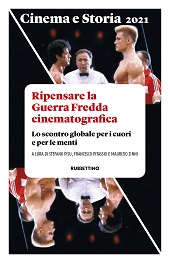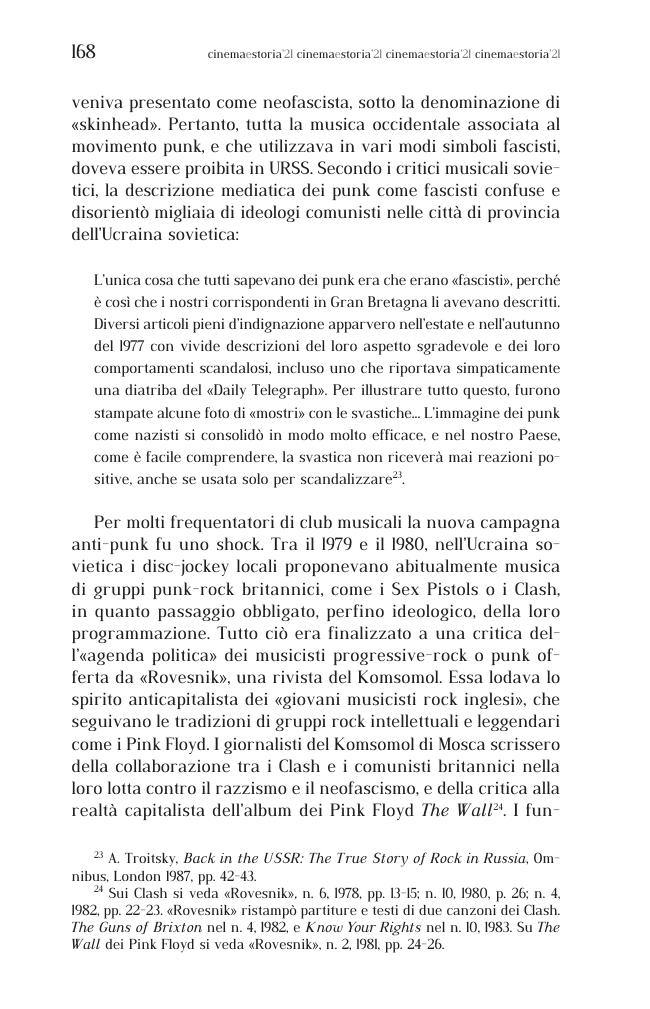La minaccia ideologica dei film italiani : il KGB, la mafia, il punk-rock e l'ascesa del neofascismo tra i giovani sovietici, 1982-1985
P. 159-177
Alla fine degli anni Settanta gli agenti del KGB nell'Ucraina sovietica avviarono una serie di operazioni speciali contro il diffondersi del neofascismo tra gli studenti liceali e universitari. Questi ultimi furono arrestati a centinaia per aver espresso apertamente idee neonaziste e neofasciste, esaltando le figure del nazionalismo ucraino, come Stepan Bandera, e organizzando un movimento contro “il governo della mafia comunista” nell'Ucraina sovietica. Quegli studenti si rifacevano alle immagini dei giovani neofascisti e a all'idea di mafia presenti in numerosi film italiani mostrati in URSS. Usando documenti d'archivio, periodici dell'epoca, diari e interviste, l'articolo indaga come quelle particolari forme di consumo culturale contribuirono alla formazione di nuove pratiche studentesche, evocanti il neofascismo e capaci di distanziare quei giovani dal sistema politico sovietico, associato alla “mafia di Stato”. [Testo dell'editore]
At the end of the 1970s, KGB officers in Soviet Ukraine initiated a series of special operations against the rise of Neo-Fascism among high school and college students. Hundreds of students in Ukrainian cities were arrested for openly expressing Neo-Nazi and Neo-Fascist views, worshipping figures of Ukrainian nationalism, such as Stepan Bandera, and organizing a movement against “the rule of the Communist Mafia” in Soviet Ukraine. Those Soviet students borrowed their images of young Neo-Fascists and a notion of the Mafia from numerous Italian feature films shown in the USSR. Using archival documents, contemporary periodicals, diaries and interviews, this essay explores how particular forms of cultural consumption contributed to a formation of their new cultural practices, reminiscent of Neo-Fascism, and to distancing themselves from the Soviet political system, which they associated with “the Mafia State.” [Publisher's text]
-
Articles from the same issue (available individually)
-
Information
DOI: 10.1400/287158
ISSN: 2283-9852



